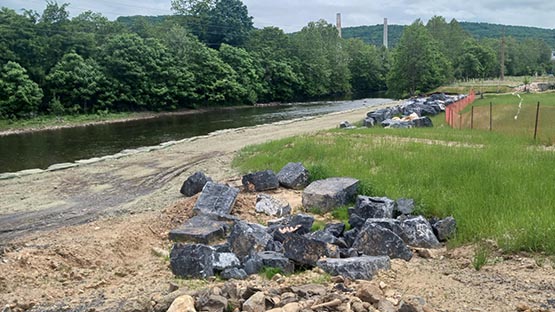
Now that solar panels are so commonplace on rooftops across the country, re-using so-called greywater—that is, the waste water from sinks, showers, tubs and washing machines—for landscape irrigation may be the next frontier in the greening of the American home, especially if you live in an arid region where water use is restricted. In fact, re-using your greywater may be the only way to keep your lawn and garden healthy without taking more than your fair share of the community’s precious freshwater reserves.
“Using water from sinks, showers and washing machines to irrigate plants is a way to increase the productivity of sustainable backyard ecosystems that produce food, clean water and shelter wildlife,” reports Greywater Action, a California-based non-profit dedicated to educating and empowering people to use water sustainably. According to the group, a typical U.S. single family home can reduce water use by as much as 30 percent by installing some kind of greywater reclamation system while simultaneously reducing pollution into nearby water bodies by filtering out contaminants locally. Capturing and reusing greywater can also be part of the battle against climate change, given that you’ll be helping grow plants that sequester atmospheric carbon dioxide while reducing demand on a regional wastewater treatment facility that’s likely powered by fossil fuels.
The simplest way to get into home greywater reuse is to install a “laundry-to-landscape” system that sends washing machine wastewater outside via a diversion tank and hose that can be moved around to irrigate specific sections of the yard. Equipment costs for such a set-up max out at $200, but labor and expertise may tack on another few hundred dollars. Handy homeowners can do much of the work in setting up such systems themselves, though those without much home repair or plumbing experience might at least consult a professional. Greywater Action suggests one way to reduce costs is by digging trenches for diversion pipes and mulch basins yourself — or enlist friends who want to support the effort and learn about residential greywater reuse in the process.
A more comprehensive system can draw wastewater from sinks, showers and tubs, too—and then filter and distribute it to backyard landscaping via a drip irrigation network. Getting such a system professionally installed can run upwards of $5,000.
Either way, once the greywater diversion system is in place, you’ll need to be careful about what goes down the drain, given how it might affect the plants and soils right outside. “In any greywater system, it is essential to put nothing toxic down the drain — no bleach, no dye, no bath salts, no cleanser, no shampoo with unpronounceable ingredients, and no products containing boron, which is toxic to plants,” adds Greywater Action.
For more information on installing a greywater reuse system yourself, check out the resources section of Greywater Action’s website, where you’ll find diagrams, written instructions and even videos to make the job go smoother. Those more inclined to hire a professional can browse through listings of qualified installers across the country. And if you want to see how it’s done first-hand, sign up to attend one of Greywater Action’s one-day workshops on how to install a greywater catchment and diversion system in a residential setting.
CONTACT: Greywater Action, www.greywateraction.org.
EarthTalk® is written and edited by Roddy Scheer and Doug Moss and is a registered trademark of E – The Environmental Magazine (www.emagazine.com). Send questions to: [email protected].









